Mind-blowing things discovered through studies about animals
Nathan Johnson
Published
11/04/2016
in
wow
animals are more interesting than you think
- List View
- Player View
- Grid View
Advertisement
-
1.
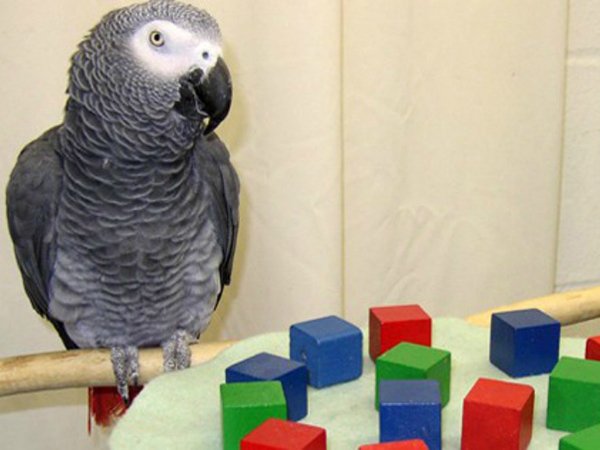 A scientist named Irene Pepperberg kept a parrot for 30 years and trained it to effectively communicate. The parrot, named Alex, was able to answer questions about objects and their size, shape, color and material. Alex even invented his own words. For example, apples were Banerries. He continued to amaze when he became the first animal to ask an existential question about himself. One day, while learning colors, Alex looked at himself in the mirror and asked “What color?” After repeating the question and getting the answer six times, he learned the color gray.
A scientist named Irene Pepperberg kept a parrot for 30 years and trained it to effectively communicate. The parrot, named Alex, was able to answer questions about objects and their size, shape, color and material. Alex even invented his own words. For example, apples were Banerries. He continued to amaze when he became the first animal to ask an existential question about himself. One day, while learning colors, Alex looked at himself in the mirror and asked “What color?” After repeating the question and getting the answer six times, he learned the color gray. -
2.
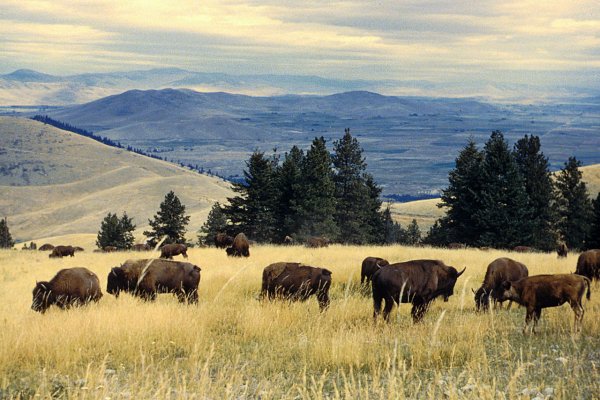 Bison vote on where to migrate. According to a study, European bison face their bodies in the direction they would like to go, and other bisons follow by moving their bodies as well. Once they have a majority, they move in that direction.
Bison vote on where to migrate. According to a study, European bison face their bodies in the direction they would like to go, and other bisons follow by moving their bodies as well. Once they have a majority, they move in that direction. -
3.
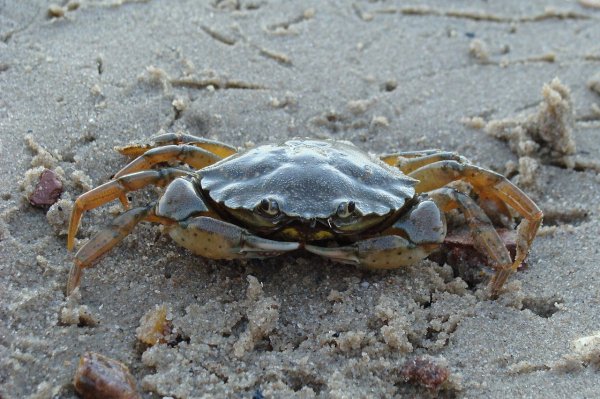 One study published in 2013 found that common shore crabs can feel pain despite people thinking they can’t because of their hard exterior. Researchers administered mild shocks to crabs, who reacted to them. One study even suggests they actually remember the pain.
One study published in 2013 found that common shore crabs can feel pain despite people thinking they can’t because of their hard exterior. Researchers administered mild shocks to crabs, who reacted to them. One study even suggests they actually remember the pain. -
4.
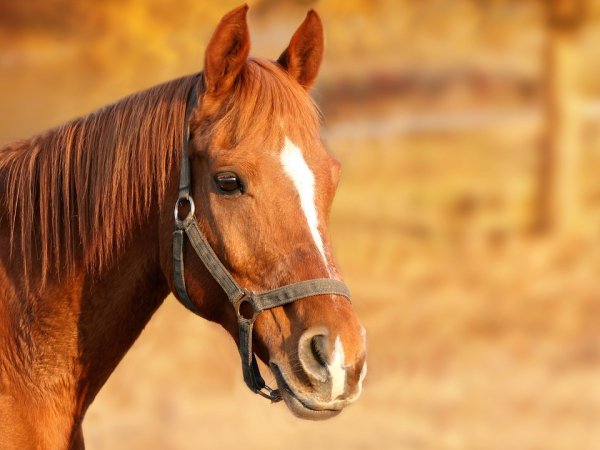 In a recent study researchers had 28 horses look at pictures of humans with different facial expressions. When looking at angry faces, the horses’ heart rates increased. and they were more likely to appear at that picture with their left eye, which is how they typically treat negative stimuli.
In a recent study researchers had 28 horses look at pictures of humans with different facial expressions. When looking at angry faces, the horses’ heart rates increased. and they were more likely to appear at that picture with their left eye, which is how they typically treat negative stimuli. -
5.
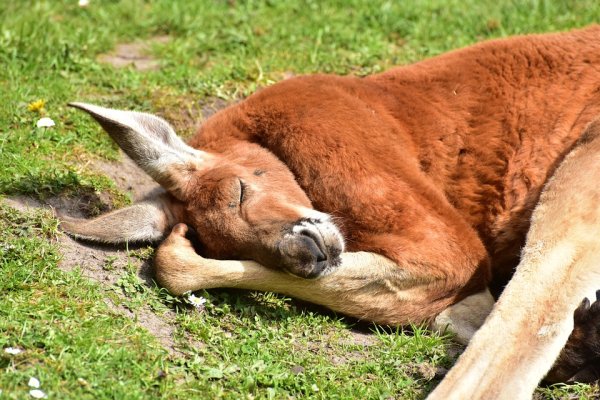 Most kangaroos are left-handed, using their left hand to groom and feed. The reason this is an important discovery for scientists is because it is very similar to how humans have a preferred hand, which suggests that this is something that evolves in mammals.
Most kangaroos are left-handed, using their left hand to groom and feed. The reason this is an important discovery for scientists is because it is very similar to how humans have a preferred hand, which suggests that this is something that evolves in mammals. -
6.
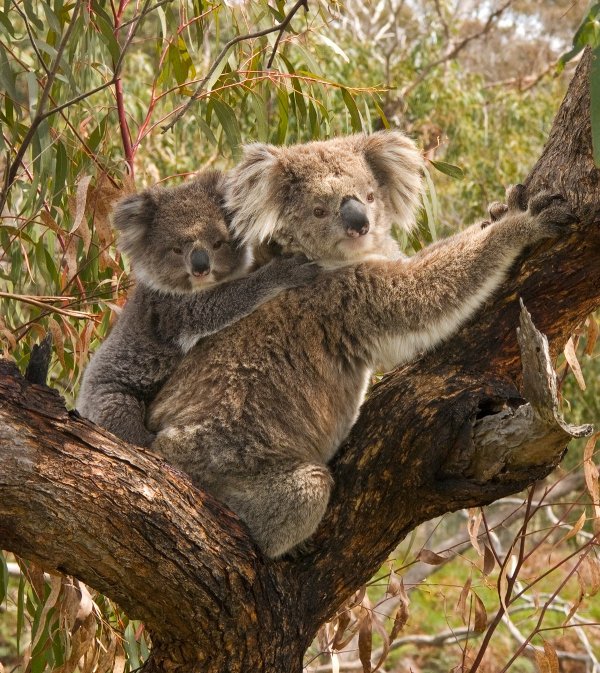 According to a study from the University of Melbourne, koalas hug trees to regulate their body temperature. In hot weather they’re usually found at the bottom of the tree, and in the winter they’re often higher up.
According to a study from the University of Melbourne, koalas hug trees to regulate their body temperature. In hot weather they’re usually found at the bottom of the tree, and in the winter they’re often higher up. -
7.
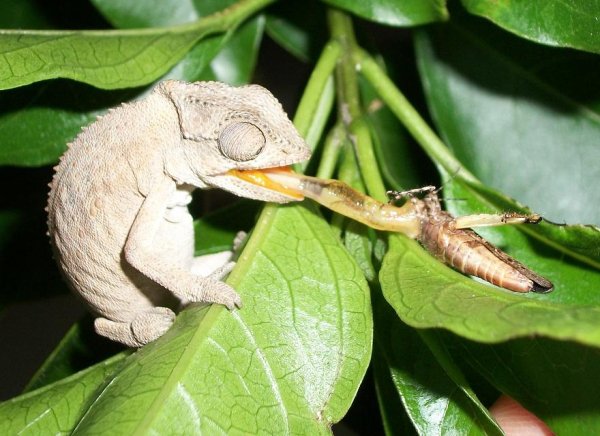 Dr. Christopher Anderson of Brown University studied chameleons. He examined their tongues by slowing down video footage of them, and then measured the length. He learned smallest chameleons have the longest tongues proportional to their body. The average chameleon tongue is two body lengths, but with the smaller ones it’s two and a half.
Dr. Christopher Anderson of Brown University studied chameleons. He examined their tongues by slowing down video footage of them, and then measured the length. He learned smallest chameleons have the longest tongues proportional to their body. The average chameleon tongue is two body lengths, but with the smaller ones it’s two and a half. -
8.
 In a 2015 study researchers put owners and their dogs in a room with an actor. The owner would then try to get something from a difficult container. The actor would either help or refuse to help, and then the actor would offer food to the dog. The dogs tended to refuse the food when the actor didn’t help their owners. This could mean the dogs are paying attention to how we interact with one another.
In a 2015 study researchers put owners and their dogs in a room with an actor. The owner would then try to get something from a difficult container. The actor would either help or refuse to help, and then the actor would offer food to the dog. The dogs tended to refuse the food when the actor didn’t help their owners. This could mean the dogs are paying attention to how we interact with one another. -
9.
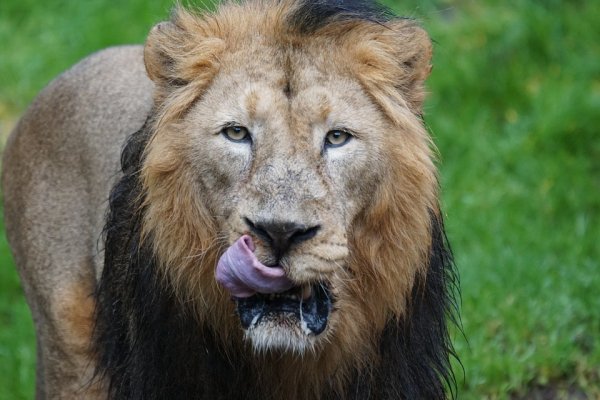 Lion manes are probably for mating purposes. In one study from the 1990s researchers had real lions interact with life-size plush lions. Females were most attracted to the lions with dark manes and male lions tried to fight the lions with blonder or short lanes.
Lion manes are probably for mating purposes. In one study from the 1990s researchers had real lions interact with life-size plush lions. Females were most attracted to the lions with dark manes and male lions tried to fight the lions with blonder or short lanes. -
10.
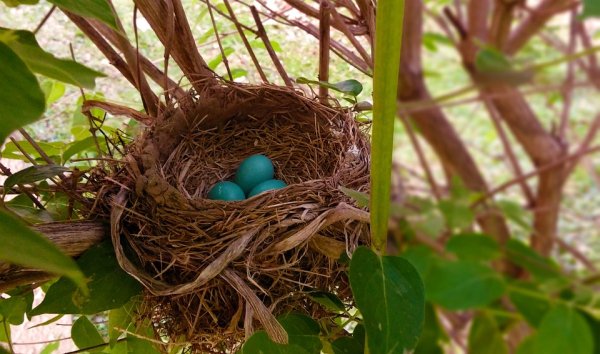 A bird behavior that fascinates researchers is how they treat the eggs of other species. Cowbirds often lay eggs in robin’s nests, only for the eggs to get tossed out by the robins. Researchers have been using fake eggs for years to study this, but more recently they 3D printed an egg that looked like a cowbird, to which the robin did the same exact thing.
A bird behavior that fascinates researchers is how they treat the eggs of other species. Cowbirds often lay eggs in robin’s nests, only for the eggs to get tossed out by the robins. Researchers have been using fake eggs for years to study this, but more recently they 3D printed an egg that looked like a cowbird, to which the robin did the same exact thing. -
11.
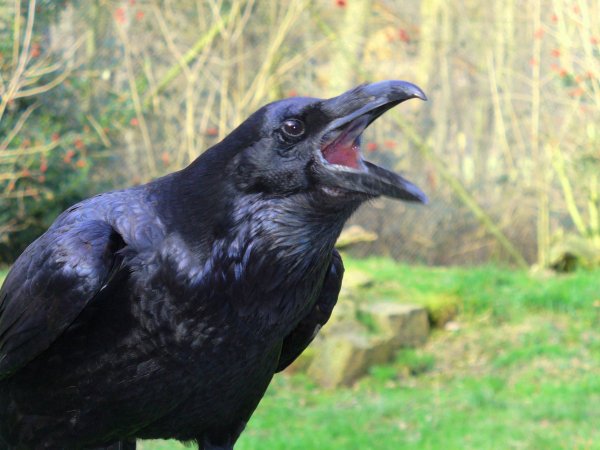 Ravens know when they’re being observed. Scientists kept 10 ravens in rooms connected by windows. Each bird could see one other bird. Later, the windows were replaced with a covering that had a small peephole that could be opened or closed. The ravens later learned what that meant. The researchers found that the birds hid their food faster when the peephole was open relative to when they knew they couldn’t be seen.
Ravens know when they’re being observed. Scientists kept 10 ravens in rooms connected by windows. Each bird could see one other bird. Later, the windows were replaced with a covering that had a small peephole that could be opened or closed. The ravens later learned what that meant. The researchers found that the birds hid their food faster when the peephole was open relative to when they knew they couldn’t be seen. -
12.
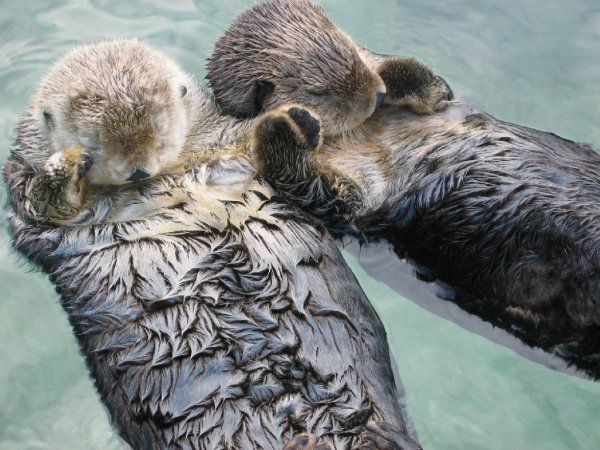 According to a study done in 2015 otters have 22 distinct calls, all meaning different things. The researchers theorized they had different noises for change of direction and warning others of danger.
According to a study done in 2015 otters have 22 distinct calls, all meaning different things. The researchers theorized they had different noises for change of direction and warning others of danger. -
13.
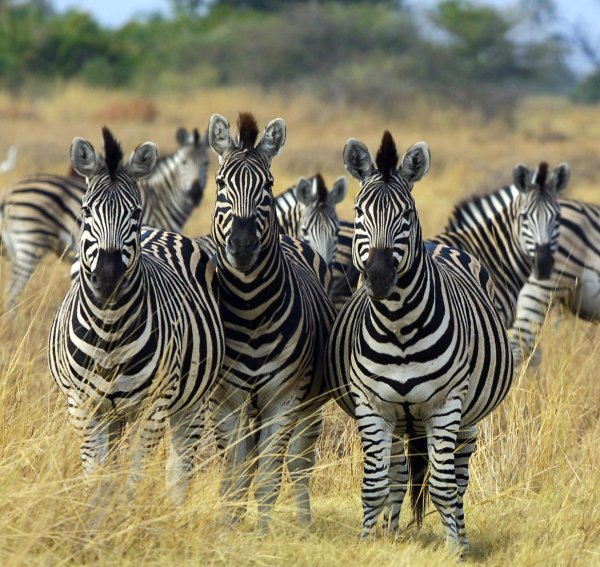 A study from 2015 examined 16 different African zebra populations and found that in warmer places they have more stripes. This made them believe that the stripes actually help the zebras regulate temperature.
A study from 2015 examined 16 different African zebra populations and found that in warmer places they have more stripes. This made them believe that the stripes actually help the zebras regulate temperature. -
14.
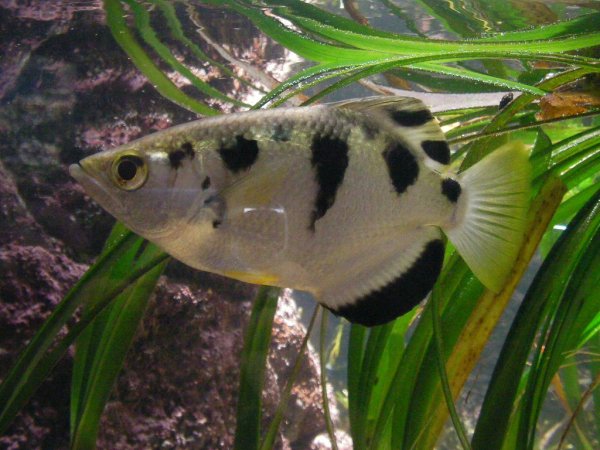 The archer fish catches insects to eat by shooting water at it to make it fall into the water. Researchers at the University of Nuremberg studied how young archer fish acquire the skills to accurately hit their target, which they can do from up to two meters away. They saw that one fish would normally do all of the shooting while the others reaped the benefits, but when that fish was removed, the others could do it just as well, despite having no practice.
The archer fish catches insects to eat by shooting water at it to make it fall into the water. Researchers at the University of Nuremberg studied how young archer fish acquire the skills to accurately hit their target, which they can do from up to two meters away. They saw that one fish would normally do all of the shooting while the others reaped the benefits, but when that fish was removed, the others could do it just as well, despite having no practice. -
15.
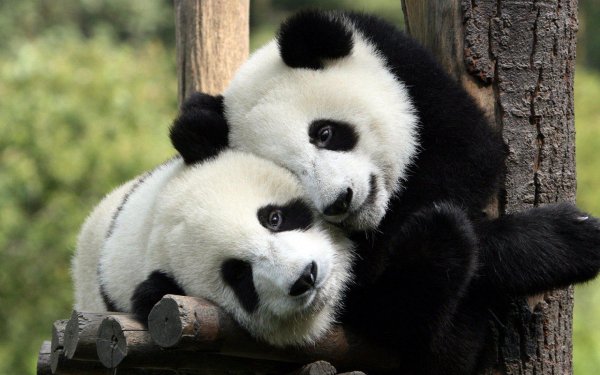 Neuroscientists were curious about why we think pandas are so adorable, so they studied their features, including their large cheeks, button nose, the way they wobble. Experts believe these things remind us of babies, so they’re especially appealing to our human brains.
Neuroscientists were curious about why we think pandas are so adorable, so they studied their features, including their large cheeks, button nose, the way they wobble. Experts believe these things remind us of babies, so they’re especially appealing to our human brains. -
16.
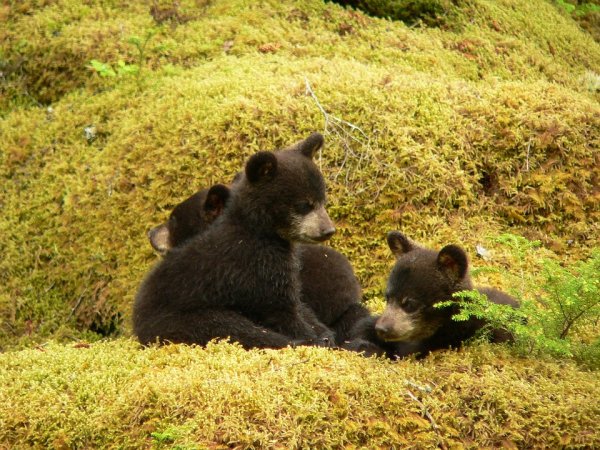 The Mobile Zoo in Alabama kind of taught black bears to count. Researchers motivated three bears through food to select between two sets of dots on computer screens. One bear was trained to select the bigger group of dots while the other two were trained to choose the smaller group. The researchers don’t want to fully say they taught the bears to count, but they did better than expected.
The Mobile Zoo in Alabama kind of taught black bears to count. Researchers motivated three bears through food to select between two sets of dots on computer screens. One bear was trained to select the bigger group of dots while the other two were trained to choose the smaller group. The researchers don’t want to fully say they taught the bears to count, but they did better than expected. -
17.
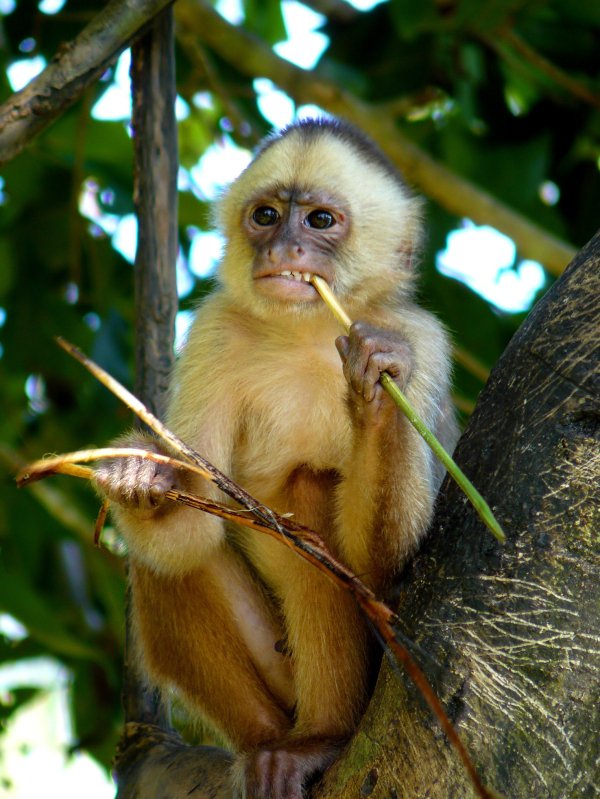 Scientists gave capuchin monkeys silver discs and taught them to treat the discs as currency. They showed them they could use them to upgrade their treats, such as going from a grape to a jello cube, using the tokens. The researchers even made the prices rise and fall, and they found that monkeys would even stock up on the discs when prices dropped, just like humans might do.
Scientists gave capuchin monkeys silver discs and taught them to treat the discs as currency. They showed them they could use them to upgrade their treats, such as going from a grape to a jello cube, using the tokens. The researchers even made the prices rise and fall, and they found that monkeys would even stock up on the discs when prices dropped, just like humans might do. -
18.
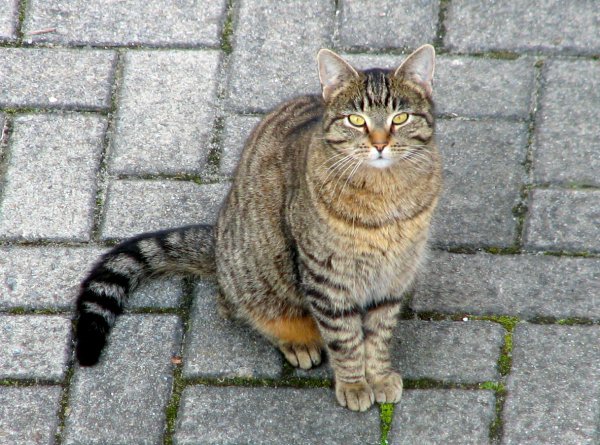 According to an analysis of cat DNA, cats were bred by early humans who could isolate the cats that liked treats and being pet. In one study 13 different important genes were noted between wild and domestic cats, like the ones associated with dopamine, hence the treats and enjoying being pet.
According to an analysis of cat DNA, cats were bred by early humans who could isolate the cats that liked treats and being pet. In one study 13 different important genes were noted between wild and domestic cats, like the ones associated with dopamine, hence the treats and enjoying being pet. -
19.
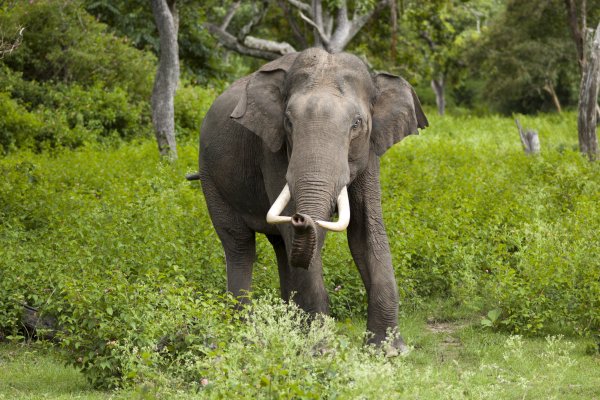 At the National Zoo in Washington DC researchers set up a pulley system for a 7-year-old elephant named Kandula. It included cables attached to heavy cubes with bamboo and fruit hanging off the cable. some Kandula could access and some not. He eventually learned that he could put weight on the various cubes to pull the fruit closer to him.
At the National Zoo in Washington DC researchers set up a pulley system for a 7-year-old elephant named Kandula. It included cables attached to heavy cubes with bamboo and fruit hanging off the cable. some Kandula could access and some not. He eventually learned that he could put weight on the various cubes to pull the fruit closer to him. -
20.
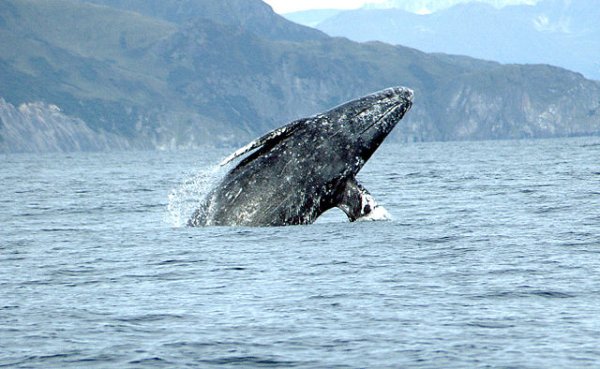 One research involved tracking a 9-year-old grey whale named Varvara. She went all the way from Russia to Baja, California AND back in 172 days, coming in at a total of 14,000 miles.
One research involved tracking a 9-year-old grey whale named Varvara. She went all the way from Russia to Baja, California AND back in 172 days, coming in at a total of 14,000 miles.
- NEXT GALLERY
-

- 14 Kids Who Are Having A Bad Day
A scientist named Irene Pepperberg kept a parrot for 30 years and trained it to effectively communicate. The parrot, named Alex, was able to answer questions about objects and their size, shape, color and material. Alex even invented his own words. For example, apples were Banerries. He continued to amaze when he became the first animal to ask an existential question about himself. One day, while learning colors, Alex looked at himself in the mirror and asked “What color?” After repeating the question and getting the answer six times, he learned the color gray.
20/20
1/20
Categories:
Wow


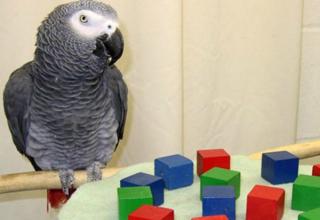





0 Comments